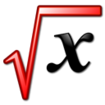TFI Knowledge Base/Maths/Patterns and Algebra
Contents
Grade 2
Std 2.18
They recognize and extend patterns based on skip counting by 2, 3, 4, 5 and 10 - both backward and forward to 1000 (may or may not be multiples); multiples of 2, 3, 4, 5, 10; odd & even numbers; geometrical figures etc. They can differentiate between repeating and growing patterns.
- SWBAT skip count by 2, 3, 4, and 5, starting with any number, up to 100
- SWBAT fill in numbers for patterns based on skip counting
- SWBAT continue patterns based on shapes/symbols
- SWBAT distinguish berween and continue repeating and growing patterns
Std 2.19
They understand the equality sign and the equality of an expression and a number. They are able to solve missing number problems like 23 = ? + 12 based on inverse relation between addition and subtraction and problems like 18 = 3 x ? based on multiplication tables, thus using pre-algebraic strategies to solve equations in an unknown.
Std 2.20
They write expressions or number sentences using ? for addition/subtraction and multiplication/division situations and solve them based on inverse relation between addition and subtraction or based on multiplication tables.
Std 2.21
They understand and use commutative & associative properties of addition to simplify computations.
Grade 3
Std 3.28
They identify and describe pattern rule for growing and repeating patterns – e.g. patterns using addition, subtraction, multiplication; patterns that do not have a constant difference e.g sequence got by adding 1 then 2 then 3… (1, 2, 4, 7, ….); sequence got by subtracting 1 then 2 then 3 …. (99, 98, 96, 94, ….); sequence got by doubling; sequence got by halving; pattern of geometrical shapes etc.
- SWBAT complete and extend numerical patterns with constant differences, up to 1000
- SWBAT continue patterns based on shapes/symbols.
Std 3.31
They select appropriate operational symbol or missing number to make an equality true e.g. 4 ? 3 = 12, 36 ? 18 = 18, 32 ? 18 = 2, 64 ÷ ? = 8, ? ÷ 12 = 12 etc.
Grade 4
Std 4.21
Students use letter in place of an unknown number while writing simple expressions or sentences representing addition, subtraction, multiplication, division problem situations and thus develop an understanding of the concept of a variable. They are thus able to concisely represent a mathematical problem by an expression or an equation using letters and correctly interpret these and solve them based on inverse relation between operations.
Std 4.22
They informally and concretely understand equality and inequality. They are able to distinguish between an expression, an equation (statement of equality involving variables) and an inequality.
Extra topic
- SWBAT continue numerical patterns with constant differences up to 10,000
- SWBAT continue patterns based on shapes/symbols
Grade 5
Std 5.18
Students recognize, describe and extend patterns in sequences, charts and tables. They can predict a certain term.
- SWBAT continue a number pattern (based on constant or changing differences)
- SWBAT continue patterns based on shapes/symbols
Std 5.19
They are able to concisely represent a mathematical problem by an expression or an equation using letters and correctly interpret these. They know that the number represented by the letter could be whole or fraction/decimal.
Std 5.21
They are able to solve balance scale problems based on simple linear equations in one variable.
Std 5.22
They develop an understanding of the concept of substitution and are able to correctly evaluate simple algebraic expressions given the values of the variables.
